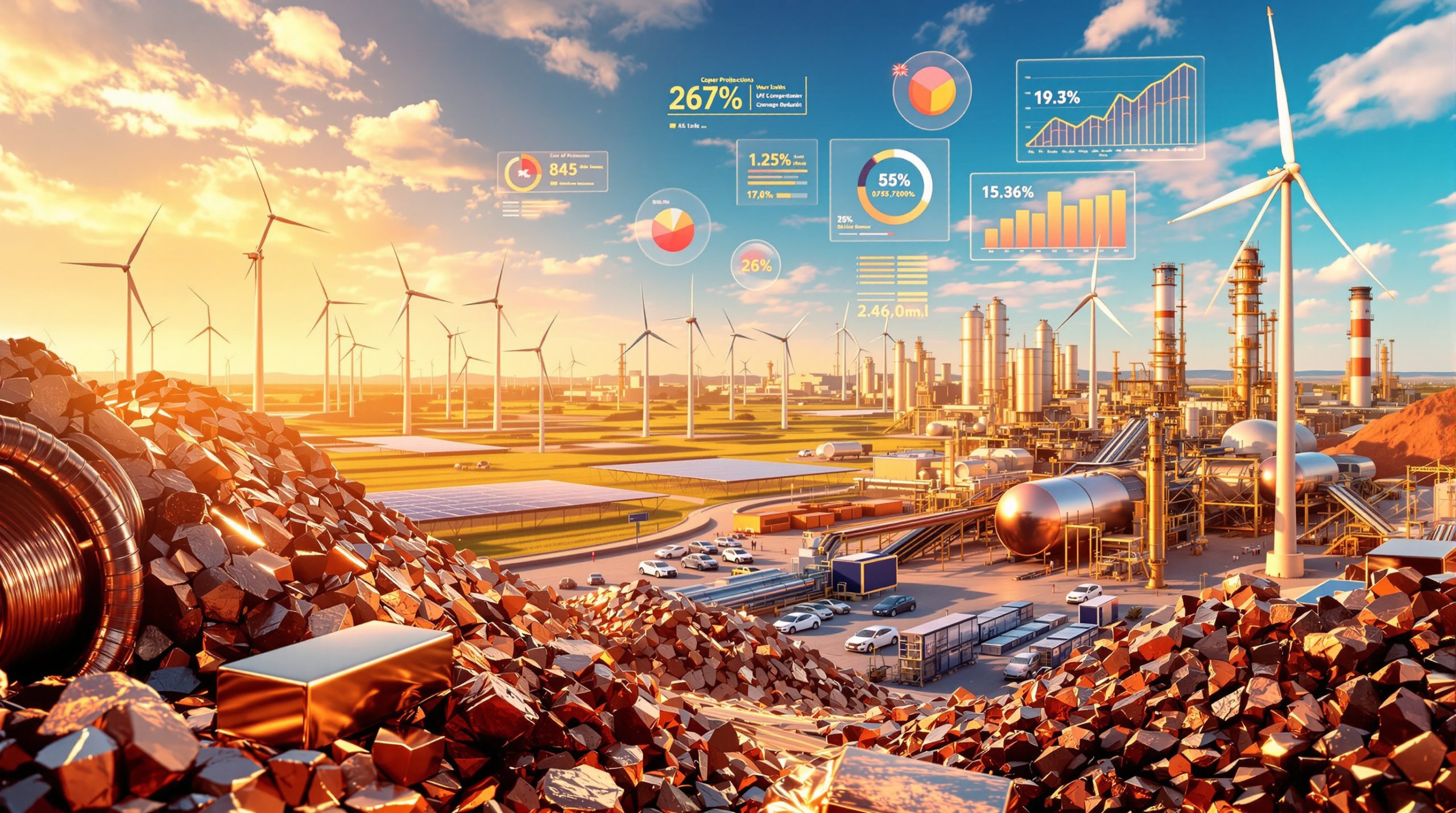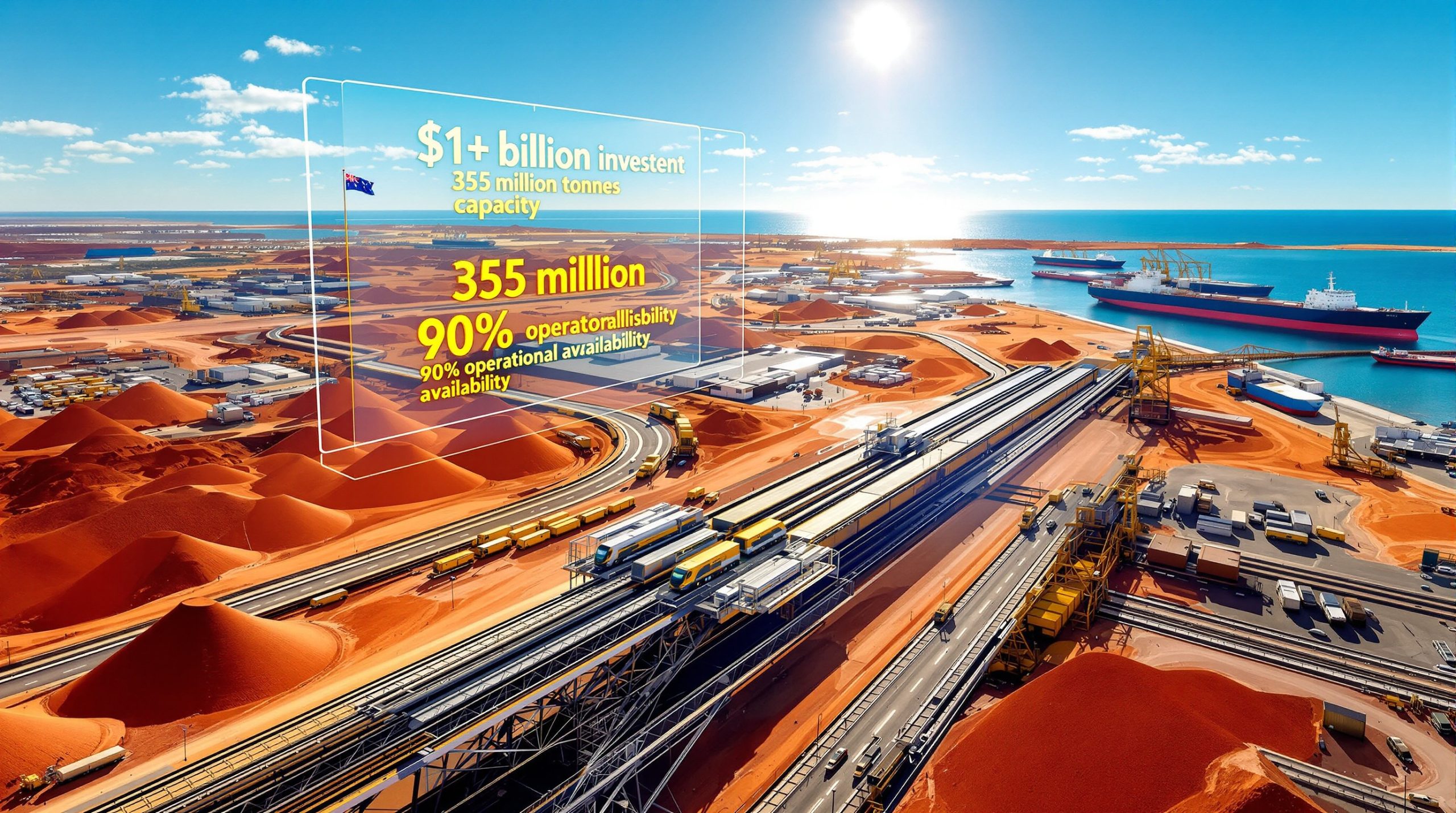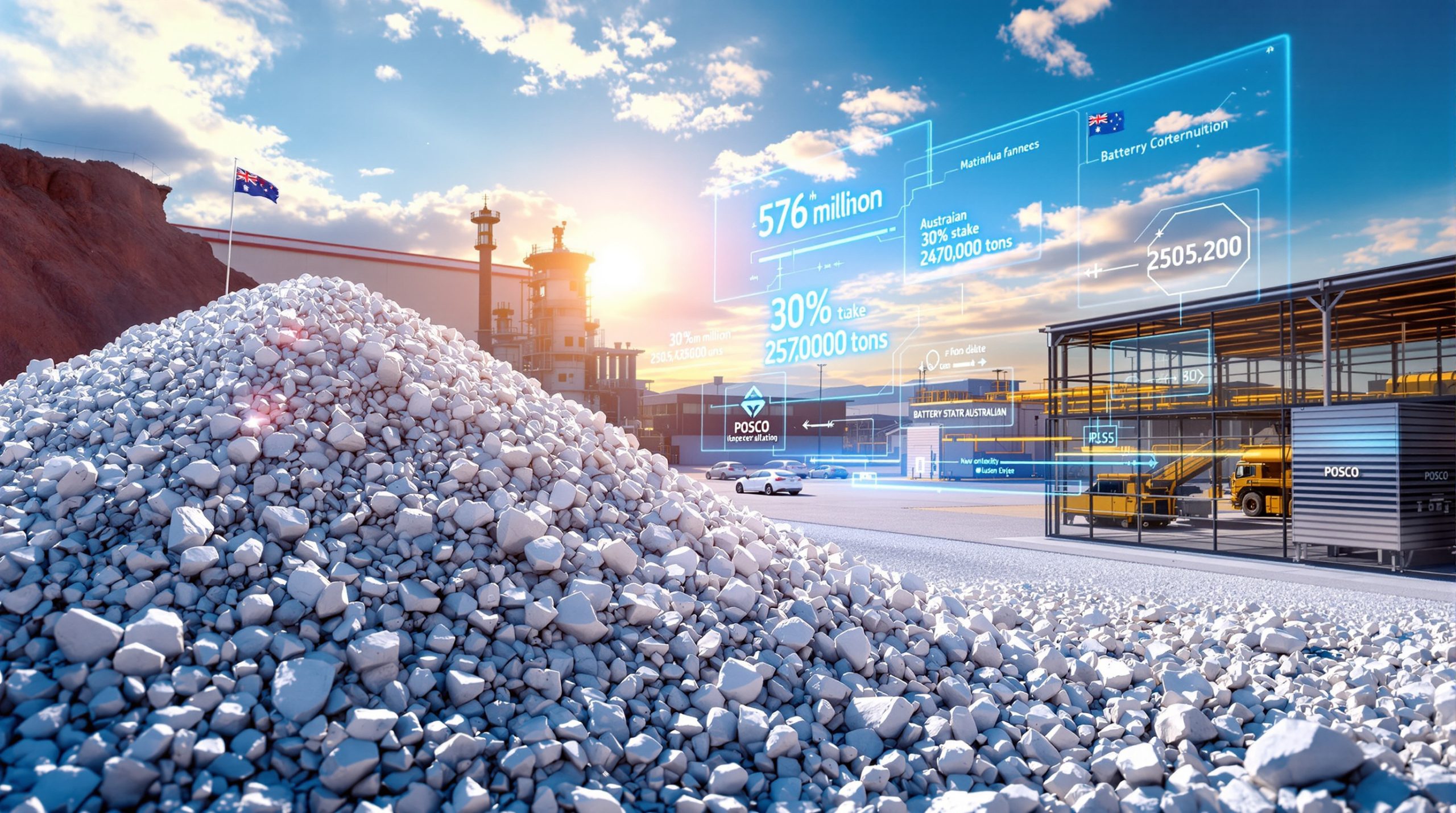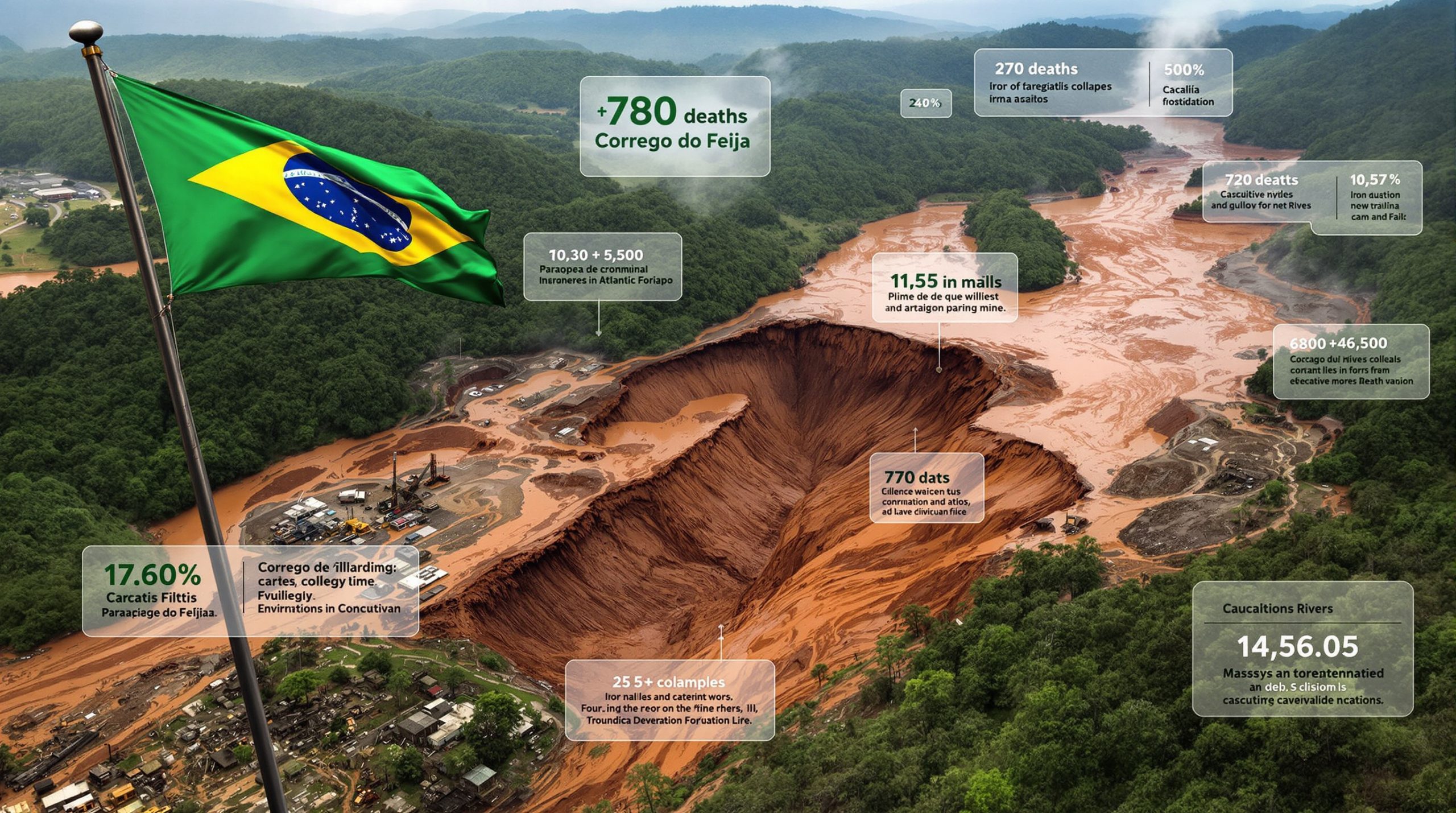What Drives the Urgent Need for Accelerated Mining Technology Adoption?
Critical Mineral Supply Crisis Demands Immediate Action
The mining sector is experiencing an unprecedented surge in demand for critical minerals—including copper, lithium, nickel, and rare earth elements—largely fueled by the global transition to renewable energy and the electrification of mobility. According to industry leaders, to meet transition targets, the world must extract as much copper in the next 22 years as has been produced throughout all of human history combined. This immense requirement extends to other core minerals vital for energy, storage, and digital infrastructure.
Key drivers for urgency include:
- Renewable energy growth creating persistent supply bottlenecks for essential minerals.
- Electric vehicle (EV) market expansion, triggering exponential rises in lithium and cobalt needs.
- The digital infrastructure boom pushing up demand for rare earth elements and nickel.
As global decarbonization efforts escalate, the cost of inaction is mounting, increasing risks of energy transition delays and economic shortfalls due to material scarcity.
Declining Ore Grades and Exploration Success Rates
Parallel to surging demand, mining faces deteriorating ore quality. Worldwide, average ore grades are falling across many commodities, especially copper and nickel. Lower grade means more rock must be processed to yield the same metal, elevating operational costs and energy usage.
Notable trends impacting the sector:
- Exploration success rates are declining, with fewer new high-grade discoveries each year.
- The cost per significant discovery has quadrupled over the past two decades (source: S&P Global Market Intelligence).
- Energy consumption per tonne of metal produced has climbed steadily as miners process more waste rock.
- Traditional mining methods are proving uneconomical for marginal deposits.
Furthermore, mining operations increasingly require deeper excavations and more sophisticated techniques. This amplifies the necessity for the faster adoption of new technologies in mining to keep pace with these mounting challenges.
How Has Mining Technology Adoption Timeline Changed?
From Decades to Years – The New Implementation Reality
Historically, technological innovation in mining required a decade or more to transition from prototype to mainstream usage. Recent industry pressures have compressed these timelines significantly, transforming implementation cycles from 10–15 years to as short as 3–5 years for proven digital solutions.
| Phase | Traditional Timeline | Accelerated Timeline |
|---|---|---|
| Pilot Testing | 2–3 years | 6–12 months |
| Industry Validation | 3–5 years | 12–18 months |
| Widespread Adoption | 5–7 years | 2–3 years |
This rapid shift is underpinned by coordinated efforts between miners, tech developers, and governments, as well as market urgency brought on by the global energy transition.
Industry Pressure Points Driving Speed
The sector is now confronted by several forces compelling accelerated innovation:
- Immediate need to meet clean energy transition deadlines with critical minerals.
- Stricter environmental regulations driving urgent adoption of compliance solutions.
- Heightened safety standards mandating rapid improvements in protective technologies.
- Persistent economic pressure necessitating productivity and efficiency gains through technology.
Companies not adapting quickly risk falling behind both operationally and reputationally. Stakeholders—ranging from investors to governments—now demand proof of action regarding sustainable resources.
Which Technologies Are Revolutionizing Modern Mining Operations?
Artificial Intelligence and Machine Learning Applications
Artificial intelligence (AI) and machine learning are set to revolutionise decision-making in mineral exploration, mine planning, and processing control. Data-driven mining operations are becoming increasingly sophisticated.
Key applications include:
- Predictive maintenance systems that monitor equipment conditions and preempt failures, cutting machinery downtime by up to 25–40% (source: McKinsey & Company).
- Advanced geological analysis using AI to identify promising mineral signatures, improving the precision and speed of discoveries.
- Automated ore-sorting systems that separate valuable material from waste, boosting mill feed grade and throughput.
- Real-time process optimization using machine learning algorithms to refine extraction efficiencies continuously.
These data-driven enhancements foster cost savings, higher yields, and reduced environmental footprints. Moreover, AI computing advancements are enabling more powerful on-site processing capabilities.
Automation and Robotics Integration
Automation is reshaping mine sites worldwide. The deployment of autonomous trucks, remote-controlled drills, and automated material handling systems has led to notable improvements in safety and productivity.
- Autonomous haul trucks, operated in major open-pit mines, offer 24/7 operation and achieve approximately 15–20% greater productivity than traditional vehicles (source: Rio Tinto, Komatsu).
- Remote-operated drill rigs improve precision and lessen worker exposure to hazardous conditions.
- Robotic ore handling and conveyor systems drive down labour costs while significantly reducing injury risks.
"Autonomous mining equipment allows mining companies to extract more resources around the clock while minimising risks to human workers."
Digital Twin Technology and IoT Sensors
Digital twin platforms—virtual replicas of mines—enable testing and optimisation without the expense or risk of real-world trials. In addition, 3D geological modelling is transforming how companies visualise and plan their operations.
Complemented by the Industrial Internet of Things (IIoT), mines are saturating their sites with sensor networks to track equipment health, ore grades, and environmental parameters in real time.
- Virtual scenario testing streamlines resource allocation and contingency planning.
- Sensor networks deliver instant feedback on air, water, and ground conditions, supporting environmental compliance.
- Predictive analytics facilitate more accurate resource estimation and mining sequence optimisation.
- Cloud integrations ensure data is accessible and actionable, even from remote project locations.
What Are the Primary Barriers to Faster Technology Implementation?
Financial Investment and ROI Concerns
A significant hurdle is the high upfront capital outlay for advanced systems. Mining companies, often cautious with unproven innovations, might hesitate due to unpredictable return timelines.
- Substantial investment is required for hardware, software, and training.
- Payback periods for emerging technologies are sometimes uncertain or longer-term.
- Industry culture leans toward risk aversion, favouring mature, validated solutions.
"Investments in breakthrough technologies typically require 18–24 months before measurable returns become apparent, which can strain shorter-term budgeting cycles."
Infrastructure and Compatibility Challenges
Mining projects are frequently located in remote regions with limited connectivity and legacy systems:
- Integrating digital solutions with aging mine infrastructure can be technically challenging.
- Lack of robust networks may limit the roll-out of IIoT and cloud analytics.
- There is a growing need for highly skilled workers to operate, interpret, and maintain new technologies.
- Obtaining regulatory clearance for entirely new mining systems can be a lengthy and unpredictable process.
Industry Collaboration and Knowledge Sharing Gaps
Other barriers include fragmented collaboration and restricted information flows:
- Competitive secrecy sometimes stifles industry-wide learning.
- No widely-adopted standard protocols for new mining technologies.
- Limited partnerships exist between mining majors, juniors, and technology innovators.
- Insufficient coordination between public and private sectors hampers research translation.
How Can Mining Companies Accelerate Technology Adoption?
Strategic Partnership Development
Collaboration lies at the heart of the faster adoption of new technologies in mining. Effective models include:
- Joint research and development between mining companies and technology providers.
- Shared investment structures to distribute the risks associated with pilot projects.
- Industry consortia that foster best-practice exchanges and pre-competitive research.
- Government co-funding programs for innovation pilots, reducing capital risk.
Phased Implementation Strategies
To ensure successful integration, phased approaches are recommended:
- Pilot new technology in a controlled part of the operation.
- Expand gradually, incorporating feedback and resolving bottlenecks.
- Rigorously monitor impacts, benchmarking productivity, safety, and sustainability metrics.
- Scale up to full operation, with continuous review and iterative improvements.
Workforce Development and Training Programs
As technology complexity rises, so too does the need for talent. Leading mining organisations invest in:
- Training current workers in digital and automation skills.
- Partnering with universities and colleges for specialised technical courses.
- Forming cross-disciplinary teams that blend conventional mining expertise with advanced analytics.
- Continuous education programs to ensure a dynamic, future-ready workforce.
What Role Do Sustainability Goals Play in Technology Acceleration?
Environmental Compliance Driving Innovation
Modern mining must align with strict sustainability standards, especially those targeting net-zero emissions and resource conservation. Modern mine planning and ESG considerations now drive technology selection.
Technologies that optimise energy use, water consumption, and waste production offer measurable environmental benefits.
| Technology Category | Environmental Benefit | Improvement Range |
|---|---|---|
| AI-Powered Equipment | Energy Reduction | 15–25% |
| Automated Systems | Water Usage Optimisation | 20–30% |
| Smart Sensors | Waste Reduction | 10–20% |
These figures are estimates drawn from leading case studies and sector reports, but actual results vary by site and deployment strategy.
Regulatory Pressure and Compliance Requirements
- New environmental and safety regulations push operators to implement advanced monitoring and reporting solutions.
- Technology enables greater transparency, which can improve relations with local communities and meet Environmental, Social, and Governance (ESG) reporting standards.
- Companies embracing sustainable technologies may also gain preferential access to capital, as investors increasingly scrutinise ESG credentials.
Which Global Examples Demonstrate Successful Technology Integration?
Case Study Analysis – Leading Mining Operations
A major Australian iron ore producer has implemented integrated AI and automation across its largest site. Notable outcomes include:
- 30% decrease in unscheduled equipment downtime after machine learning algorithms were installed for predictive maintenance (source: Rio Tinto annual sustainability report).
- Autonomous haulage systems operate over 200 trucks, leading to a roughly 15% bump in overall site productivity.
- Enhanced environmental monitoring using sensor arrays that detect dust, water, and noise metrics in real time.
Lessons from Early Technology Adopters
Early leaders have adopted several robust strategies:
- Carefully stage technology deployment to minimise operational disruptions.
- Rethink change management—prioritising staff buy-in, retraining, and clear benchmarks.
- Use detailed performance measurement to quantify success, adjusting strategy as necessary.
- Establish scalable frameworks so technology piloted at one site can be replicated elsewhere with minimal delay.
The mining industry evolution demonstrates how successful organisations adapt to these technological shifts.
What Investment Trends Support Faster Mining Technology Adoption?
Venture Capital and Private Equity Interest
Recent years have seen a sharp uptick in venture capital and private equity investment in mining technology. Mining technology trends indicate continued growth in this sector.
- Funding for mining tech startups reportedly soared by 340% between 2020 and 2024, reaching approximately $2.8 billion per annum (source: PitchBook, 2024).
- Major mining houses have allocated strategic capital to both in-house innovation and external partnerships, recognising technology as a competitive differentiator.
- Governments are introducing grant programs and tax incentives to stimulate industry-wide technology transitions.
"Investment surges reflect not only the profitability prospects, but the existential need for a viable, sustainable mining future."
Technology-as-a-Service Models
The rise of subscription-based and leasing models for technology deployment (Technology-as-a-Service, or TaaS) is lowering the barrier to adoption:
- Miners can reduce initial capital investment and access the latest updates through service contracts.
- Risks are spread between technology developers and mining firms, encouraging broader experimentation.
- Flexible escalation allows users to scale up systems across assets as benefits are demonstrated.
- Many contracts incorporate performance-based payments, aligning technology provider incentives with operational outcomes.
How Will Future Mining Operations Look with Accelerated Technology Adoption?
Fully Integrated Smart Mining Ecosystems
The long-term vision for mining includes highly connected, data-driven ecosystems:
- Interconnected platforms bridge exploration, extraction, haulage, and processing, enabling real-time adjustment to market and operational shifts.
- AI-based analytics guide decisions, from drill targeting through to mill optimisation and shipping logistics.
- Autonomous operations and robotics handle hazardous or repetitive tasks, dramatically lowering incident rates and potentially enabling mines with minimal onsite human presence.
- Predictive maintenance eliminates costly breakdowns before they cause operational losses.
Sustainability and Efficiency Convergence
Tomorrow's mines will prioritise not just output, but stewardship:
- Advanced processing technologies extract metals with close to zero waste, aligning with circular economy principles.
- Onsite renewable energy reduces net carbon emissions, supporting broader climate objectives.
- Mining by-products are repurposed, supporting both economic and environmental goals.
- Greater community engagement is fostered through transparent, technology-enabled reporting and monitoring.
Conclusion – The Imperative for Immediate Action
The mining sector stands at a crossroads. The pace of demand for critical minerals far outstrips historic precedent, and traditional innovation cycles are incapable of closing the looming supply gap. Rapid, collaborative adaptation—the faster adoption of new technologies in mining—has become essential, not optional.
Forward-thinking organisations are seizing this window to transform both their competitiveness and their role in sustainable global development. However, as industry experts highlight, critical mineral demand continues to outstrip supply, making technological acceleration more urgent than ever.
To succeed, the industry must foster partnerships that cross organisational and national boundaries. Companies must invest strategically in talent and technology, and embrace bold, phased approaches to change. Only through such coordinated, future-focused action can mining fulfil its pivotal part in enabling a stable, clean energy future.
Further Exploration:
Those interested in advancing their knowledge of these trends can consult the latest conference proceedings, technical papers, and innovation summit discussions that profile the most promising breakthroughs in mining technology acceleration.
Ready to Invest in the Next Major Mineral Discovery?
Discovery Alert instantly alerts investors to significant ASX mineral discoveries using its proprietary Discovery IQ model, turning complex mineral data into actionable insights. Understand why historic discoveries can generate substantial returns by visiting Discovery Alert's dedicated discoveries page, and begin your 30-day free trial today to position yourself ahead of the market.




